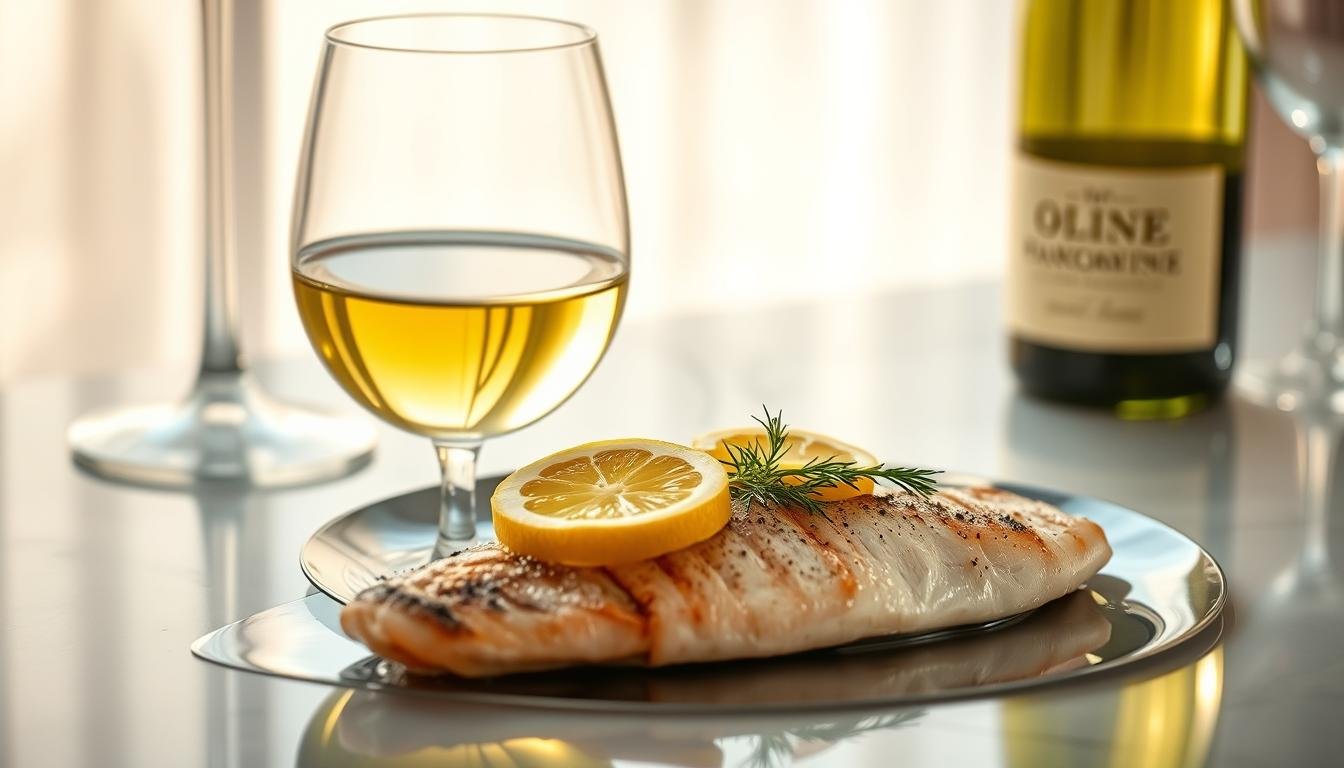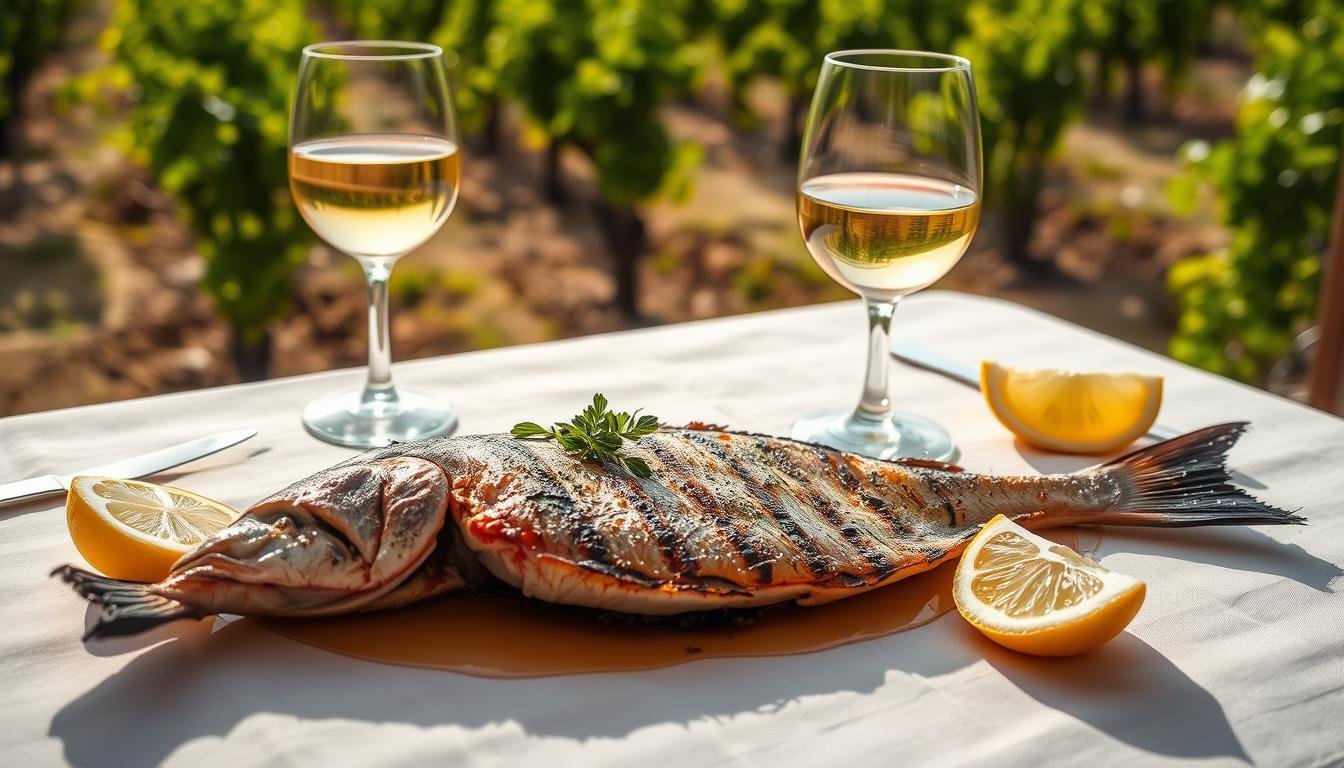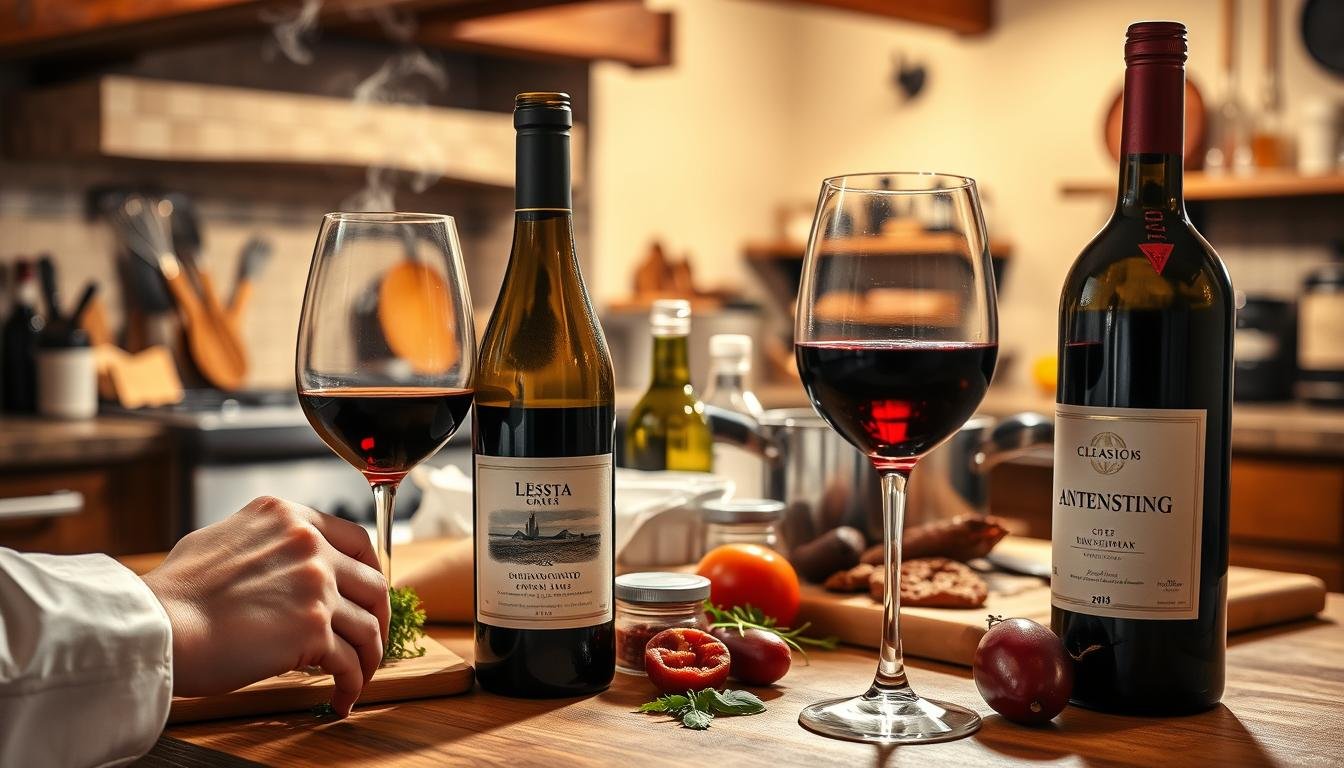Creating the perfect seafood dish is not just about the main ingredient; it’s also about what you pair it with. Whether you’re a wine enthusiast or a foodie looking to elevate your dining experience, understanding how to harmonize flavors and textures is key.
When it comes to seafood pairings, the options are endless. From the delicate taste of fresh fish to the rich flavors of lobster, pairing wine with seafood can enhance the natural flavors and create a balanced taste experience. But it’s not just about wine; seasonal vegetables and thoughtful preparation can also play a crucial role in crafting a memorable meal.
Key Takeaways
- Discover how the right pairings can transform your seafood dishes.
- Learn why understanding fundamental principles of food pairing is essential.
- Explore how complementary and contrasting flavors work together.
- Understand the role of texture in successful seafood pairings.
- Get an overview of versatile pairing options for multiple types of seafood.
Understanding the Art of Seafood Pairing
The key to a perfect seafood meal lies in the art of pairing, where balance and contrast come together. Effective seafood pairing is not just about combining ingredients; it’s about creating a harmonious dish that delights the palate.
The “What Grows Together Goes Together” Principle
This principle suggests that ingredients that are locally sourced and grow together often pair well. For example, the buttery flavor of salmon pairs naturally with spinach‘s earthy and slightly bitter taste. This combination works because both ingredients are often found together in certain culinary traditions.
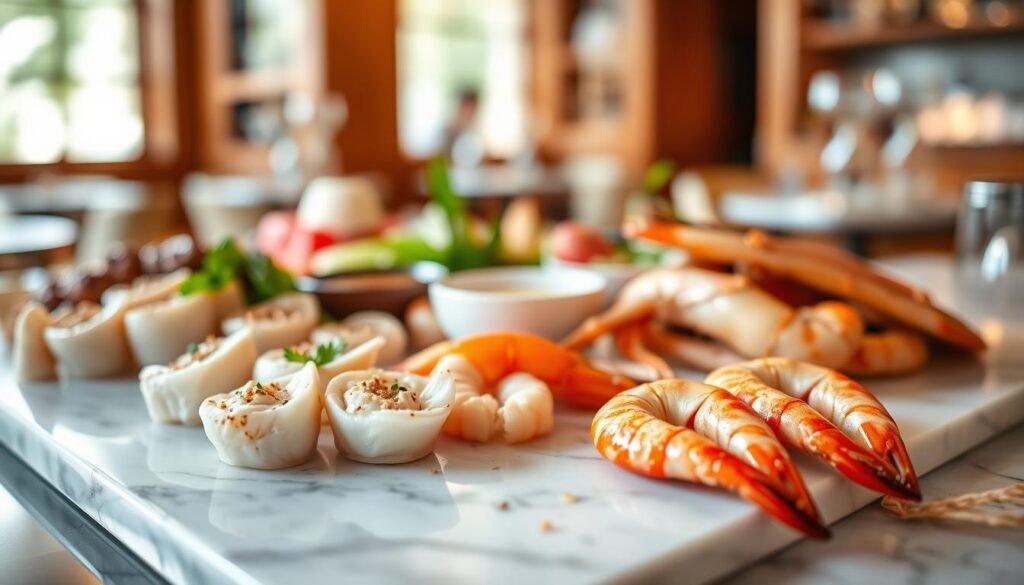
Balancing Flavors and Textures
Balancing flavors and textures is crucial in seafood pairing. For instance, scallops are an underrated gem for weeknight meals due to their quick cooking time and sweet flavor, which balances the slightly bitter flavors of Brussels sprouts. The key is to understand how different flavors and textures complement or contrast each other. You can explore more about balancing flavors and enhancing your seafood experience with wine pairings on our page about seafood and wine pairings.
To achieve a well-rounded seafood dish, consider the fundamental principle of balancing contrasting flavors (sweet, salty, sour, bitter, umami) and textures. Delicate white fish should be paired with subtle accompaniments, while heartier seafood can be matched with more robust companions. The natural sweetness in seafood like scallops or shrimp can be enhanced or contrasted with different accompaniments. Additionally, citrus can add acidity that cuts through the richness in fatty fish, creating a balanced flavor profile.
Essential Wine Pairing Tips for Seafood
When it comes to pairing wine with seafood, the options can be overwhelming, but understanding a few key principles can make all the difference. The right wine can enhance the flavors of your seafood, creating a harmonious dining experience.
White Wines: The Classic Seafood Companion
White wines are traditionally paired with seafood due to their crisp acidity and delicate flavors. Chardonnay, Sauvignon Blanc, and Pinot Grigio are popular choices.
Chardonnay, Sauvignon Blanc, and Pinot Grigio Pairings
Chardonnay pairs well with richer fish like salmon, while Sauvignon Blanc complements delicate fish such as sole. Pinot Grigio is versatile and can be paired with a variety of seafood.
Matching Wine Acidity with Fish Types
The acidity of the wine should match the type of fish. Delicate fish require wines with higher acidity, while richer fish can be paired with wines having a richer texture.
| Fish Type | Recommended Wine | Acidity Level |
|---|---|---|
| Delicate Fish (Sole) | Sauvignon Blanc | High |
| Richer Fish (Salmon) | Chardonnay | Medium |
| Shellfish | Pinot Grigio | Medium-High |
Sparkling Wines: Elevating Shellfish Dishes
Sparkling wines, such as Champagne, can elevate shellfish dishes, adding a celebratory touch to meals. They pair particularly well with oysters and other delicate shellfish.
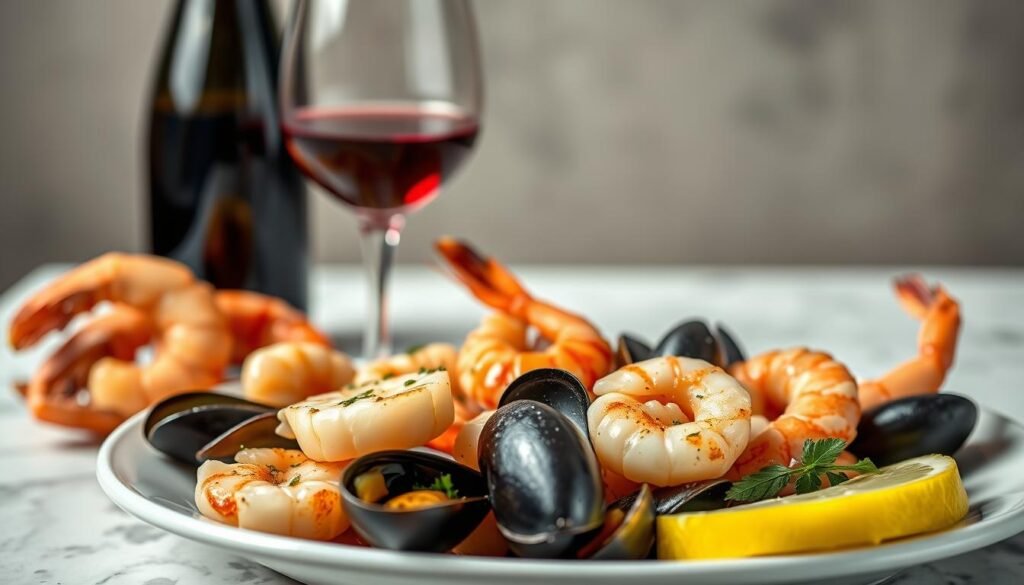
Red Wines: Breaking Traditional Rules
While white wine is the traditional choice for seafood, certain red wines can complement seafood dishes. Pinot Noir is an excellent option for salmon recipes, offering bold fruit flavors that match the savory, smoky characteristics of grilled or smoked salmon.
For more insights on seafood and wine pairing, you can visit CellarBeastWine’s blog on seafood and wine.
Vegetable and Herb Pairings for Different Seafood Types
Combining seafood with the right vegetables and herbs is a culinary technique that can transform even the simplest dishes into something extraordinary. The key to a great seafood dish lies in understanding how to pair the seafood with complementary flavors and textures.
Leafy Greens and Hearty Fish
Leafy greens such as spinach and kale are perfect for pairing with hearty fish like salmon and tuna. These greens not only add a burst of nutrients but also complement the rich flavors of the fish. For example, a simple spinach salad with grilled salmon, cherry tomatoes, and a light vinaigrette makes for a refreshing and healthy meal.
Seasonal Vegetable Pairings
The choice of vegetables can greatly depend on the season, with different vegetables being at their best during different times of the year. Pairing seafood with seasonal vegetables can enhance the dish’s flavor and freshness.
Spring and Summer Combinations
During the spring and summer, vegetables like asparagus, bell peppers, and zucchini are at their peak. Grilling or sautéing these vegetables and serving them alongside grilled shrimp or fish can make for a light and flavorful meal. For instance, combining sliced and blanched asparagus with shucked crab meat, lemon zest, and your favorite pasta creates a delightful dinner.
Fall and Winter Combinations
In the fall and winter, heartier vegetables like Brussels sprouts and sweet potatoes come into season. Searing scallops until golden brown and serving them on a bed of Brussels sprouts sautéed in crispy bacon is a hearty and satisfying combination. You can also roast sweet potatoes and serve them alongside a piece of grilled fish for a comforting meal.
| Season | Vegetables | Seafood Pairing |
|---|---|---|
| Spring/Summer | Asparagus, Bell Peppers | Grilled Shrimp, Fish |
| Fall/Winter | Brussels Sprouts, Sweet Potatoes | Scallops, Grilled Fish |
Fresh Herbs That Enhance Seafood Flavors
Fresh herbs can significantly enhance the flavors of seafood dishes. Herbs like dill, tarragon, and cilantro pair naturally with different types of seafood. For example, dill complements salmon beautifully, while tarragon is perfect for delicate white fish. Cilantro, on the other hand, adds a fresh flavor to spicy shrimp dishes.
For more ideas on seafood and vegetable pairings, you can visit Vital Choice for expert tips and recipes.
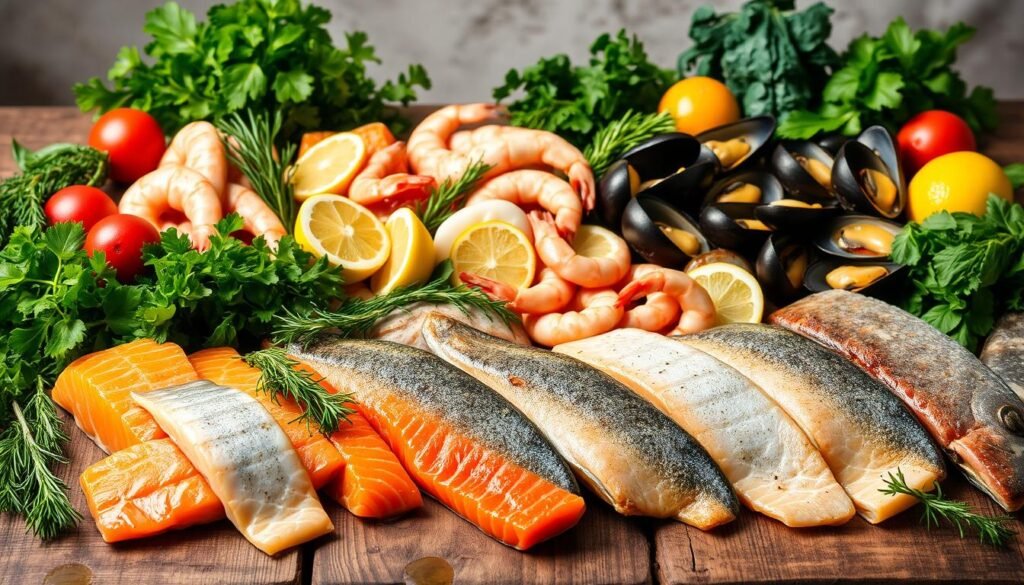
Perfect Pairings for Specific Seafood Varieties
The art of pairing seafood involves understanding the unique characteristics of different seafood types and finding complementary flavors. Whether you’re preparing a delicate white fish or a rich, oily fish, the right pairing can elevate your dining experience.
White Fish Pairings: Cod, Sea Bass, and Halibut
White fish like cod, sea bass, and halibut are known for their light, flaky texture and mild flavor. These characteristics make them ideal for pairing with bright, citrusy flavors and crisp, dry wines. For example, a lemon herb marinade can enhance the delicate flavor of sea bass, while a glass of Sauvignon Blanc can complement its freshness. When cooking halibut, a garlic butter sauce can add richness without overpowering the fish.
Rich Fish Pairings: Salmon, Tuna, and Mackerel
Rich fish such as salmon, tuna, and mackerel have a meaty texture and a robust flavor profile. These fish are well-suited to bold flavors and can stand up to a variety of cooking methods. A Asian-inspired glaze with soy sauce and ginger can complement the richness of salmon, while a sparkling wine can cut through the richness of tuna. For mackerel, a pickled vegetable salad can provide a nice contrast in texture and flavor.
Shellfish Pairings: Crab, Lobster, and Shrimp
Shellfish like crab, lobster, and shrimp are prized for their tender meat and sweet flavor. These seafood types are often paired with light, delicate flavors that won’t overpower their natural sweetness. A butter and lemon sauce is a classic pairing for steamed lobster, while a dry Riesling can complement the sweetness of crab. For shrimp, a spicy Cajun seasoning can add a bold, aromatic flavor.
Mollusks Pairings: Oysters, Mussels, and Clams
Mollusks, including oysters, mussels, and clams, have a distinct brininess and a rich, mineral flavor. These characteristics make them ideal for pairing with crisp, high-acid wines and aromatic ingredients. For raw oysters, a mignonette sauce with shallots and red wine vinegar is a classic accompaniment, while a glass of Champagne can enhance their delicate flavor. For steamed mussels, a garlic and white wine broth can add depth and complexity.
Conclusion: Creating Your Own Seafood Pairing Adventures
As we conclude our journey through the world of seafood pairing, it’s clear that the art of combining seafood with the perfect wine or food is a personal and ever-evolving adventure. The key principles explored in this guide – from the “what grows together goes together” philosophy to balancing flavors and textures – provide a solid foundation for your culinary explorations.
Remember, there’s no one-size-fits-all approach to pairing seafood with wine or food. Personal preference should always be your guide. Don’t be afraid to experiment with unexpected combinations, as many classic pairings were once considered unconventional. Start with tried-and-true combinations and gradually explore more adventurous pairings. Consider keeping a tasting journal to record your successes and setbacks, helping you develop your palate over time.
For more inspiration, explore resources like this article on finding the perfect pairing with seafood. As you continue on your seafood pairing journey, remember to make sustainable choices that not only delight your taste buds but also help preserve our ocean ecosystems for years to come. Enjoy the process, and happy pairing!



